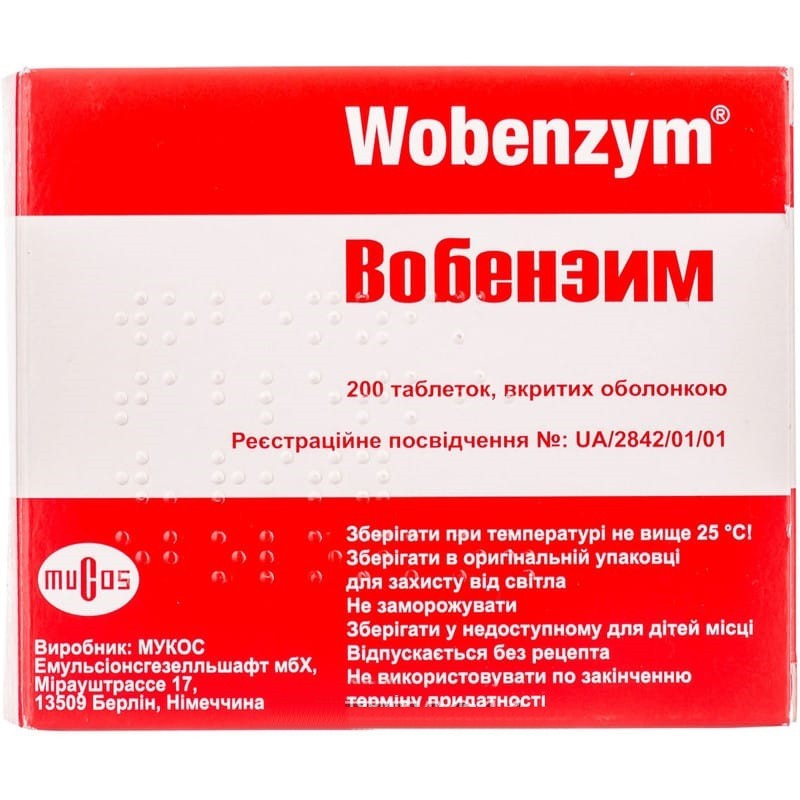



 Secure and encrypted payment processing
Secure and encrypted payment processing We ship to over 40 countries including the USA, UK, Europe, Australia and Japan
We ship to over 40 countries including the USA, UK, Europe, Australia and Japan Guaranteed refund or reship if you haven't received your order
Guaranteed refund or reship if you haven't received your orderEnzymes for oral administration, such as bromelain / trypsin / chymotrypsin / papain / pancreatin and rutoside, affect swelling of inflammatory and non-inflammatory origin (traumatic, sports). animal studies (rat paw tests) have proven the anti-inflammatory properties of bromelain and combined enzyme preparations when taken orally. in numerous animal studies, as well as in vitro tests, bromelain and trypsin inhibited platelet aggregation and reduced their readiness for adenosine diphosphate aggregation.
Chymotrypsin, trypsin and bromelain affect blood clotting in various ways in vitro. However, effective concentrations are very high and significantly exceed those found in patients after oral administration. As a result, healthy cohort volunteers who received the bromelain / papain / rutin combination did not show any clotting disorder. In vitro and in vivo tests with bromelain / trypsin / chymotrypsin / papain and pancreatin showed an effect on pathogenic immune complexes, but only bromelain / trypsin / chymotrypsin / papain activated non-stimulating mononuclear cells and reduced the release of molecules with abnormal C adhesion (44 CD 54).
Anti-inflammatory properties are also described for rutoside. The inhibition of lipo- and cyclooxygenase was confirmed. Inhibition of platelet aggregation has also been shown in experiments on rats. Rutoside is effective against free radicals. Thus, the mechanism of action of rutoside on blood vessels requires further research.
After oral administration of enzymes, the best correlation was observed between the concentrations of trypsin and bromelain in blood plasma and the doses administered. The equilibrium state is reached after 4 days. Unabsorbed rutoside, or hydrolase, is excreted in the feces.
Resorbed enzymes are excreted through the cells of the mononuclear-phagocytic system.
As part of a comprehensive treatment:
ENT organs and respiratory tract: sinusitis, bronchitis, bronchopneumonia;
gastrointestinal tract: pancreatitis, ulcerative colitis, Crohns disease;
Depending on the duration and severity of the disease, the recommended dose for adults is 3–10 coated tablets 3 times a day. maintenance dose - 3-5 coated tablets, 3 times a day. the course dose of the drug is selected individually.
For children, the dose of the drug is calculated depending on body weight. The daily dose of the drug in children aged 3-12 years is 1 tablet per 6 kg of body weight. For children aged 12 years, the dose corresponds to the dose of an adult.
The course of therapy for acute diseases - from 2 weeks to recovery; with exacerbation of chronic diseases, treatment lasts until distinct signs of remission are achieved. The average duration of treatment is from 2 weeks to 3 months.
Coated tablets are recommended to be taken 30 minutes before meals, without chewing, with a large amount of liquid (≥200 ml).
Individual hypersensitivity to the components of the drug. severe congenital or acquired coagulation disorders (hemophilia, severe liver damage), diseases associated with an increased likelihood of bleeding, thrombocytopenia.
In some cases, slight changes in the consistency and smell of feces are possible. occasionally, allergic reactions (such as a skin rash) can occur that disappear after discontinuation of Wobenzym treatment or dose reduction. in some cases, anaphylactic reactions may occur. taking the drug in high doses can cause vomiting, a transient feeling of fullness of the stomach, flatulence, and very rarely diarrhea. this can be prevented by dividing the daily dose into 4–5 doses. changes in the skin and subcutaneous tissue can occur occasionally: erythema, pruritus, hyperhidrosis.
In infectious and inflammatory processes, Wobenzym does not replace antibacterial agents, but increases their effectiveness.
For diseases of the gastrointestinal tract, decompensation of cardiac activity, emphysema, cirrhosis of the liver, pancreatitis, the need to prescribe the drug is determined individually.
Use during pregnancy and lactation. During pregnancy and lactation, the use of Wobenzym should be treated with the usual caution for this condition. Use is possible after the doctor evaluates the benefit for mother / risk to the fetus / child ratio.
There is no data excluding the likelihood of penetration of the drug into breast milk.
Children. It is used in children over the age of 3 years.
The ability to influence the reaction rate when driving vehicles or working with other mechanisms. Does not affect.
There are no cases of incompatibility while taking Wobenzym with other drugs. with simultaneous use with antibiotics, wobenzym increases their concentration in blood plasma and the focus of inflammation.
Even with prolonged use of the drug in high doses, no toxic effects were detected, but diarrhea is possible, which disappears 1-3 days after the drug is discontinued without additional treatment.
In a dry, dark place at a temperature not exceeding 25 ° C.